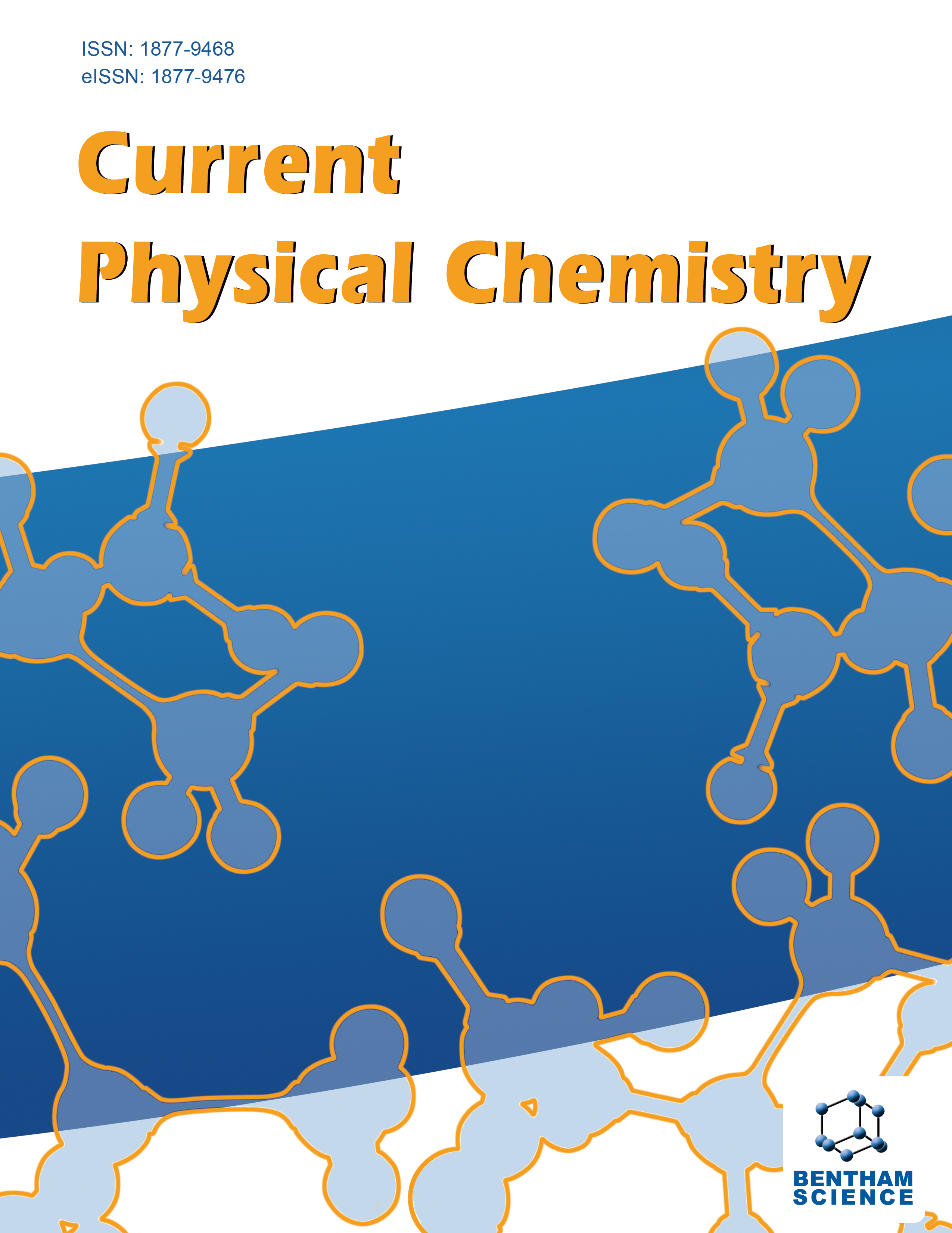- Home
- A-Z Publications
- Current Physical Chemistry
- Previous Issues
- Volume 6, Issue 4, 2016
Current Physical Chemistry - Volume 6, Issue 4, 2016
Volume 6, Issue 4, 2016
-
-
A Review of Theoretical Studies on Functionalized Graphene for Electrochemical Energy Conversion and Storage Applications
More LessAuthors: Ana S. Dobrota and Igor A. PastiDeveloping new materials with specific properties is of crucial importance for the growing number of energy-related problems. Recently introduced graphene offers an attractive alternative to the commonly used materials for energy conversion and storage applications. However, despite its many extraordinary properties, pristine graphene is chemically inert and interacts weakly with many species of importance in the fields Read More
-
-
-
Kinetics and Mechanism of Oxidation of Mono Manganese(II) Substituted Lacunary Phosphotungstate and Phophomolybdate by Bromate Ion
More LessAuthors: Jyoti N. Barge and Gavisiddappa S. GokaviObjective: Oxidation of manganese(II) substituted lacunary phophotungstate and phosphomolybdate by bromate was investigated in aqueous sulphuric acid. Method: The reaction was found to involve an induction period due to initiation through the oxidation of traces of bromide by bromate. Under the reaction conditions the reductants exit as their unprotonated anions [PMnW11O39]5- and [PMnMo11O39]5- respecti Read More
-
-
-
Ozone Depletion Explains Global Warming
More LessBackground: The Intergovernmental Panel on Climate Change concludes that anthropogenic greenhouse gases are extremely likely to have been the dominant cause of observed global warming. Depletion of the ozone layer by manufactured chlorofluorocarbon gases and volcanic eruptions, however, provides a much more detailed and precise explanation for changes in climate observed since the industrial revolution and thr Read More
-
-
-
In-Silico Analysis of Electronic Structures of Model Polypeptide Chains using Particle Swarm Optimization
More LessAuthors: Priyanka Thakral, Vimal Rarh and Ashok K. BakhshiObjective: Particle swarm optimization (PSO) algorithm has been clubbed with two numerical methods viz., negative factor counting (NFC) technique and inverse iteration method to investigate the electronic structures and properties of model polypeptide chains. Method: Band structures of polyglycine, polyalanine and polythreonine obtained from abinitio Hartree-Fock crystal orbital method using minimal basis ( Read More
-
-
-
A Comparative Study on the Thermal and Microwave-assisted Direct Esterification of Phenyl-H-phosphinic Acid - Modeling the Rate Enhancing Effect of MWs
More LessAuthors: Gyorgy Keglevich, Nora Z. Kiss and Zoltan MucsiBackground: The theoretical background of MW-assisted reactions is in the focus these days. Objective and Method: We wished to model the distribution of local overheatings (OHs) mathematically, and the rate enhancing effect of the OHs utilizing the Arrhenius equation. The model reaction was the esterification of phenyl-H-phosphinic acid with 15-fold butanol at 160 °C. Results: The results of the modelling and predi Read More
-
-
-
Structure and Physicochemical Properties of Water Treated w ith Low-Temperature Low-Frequency Glow Plasma
More LessPhysical and selected physicochemical properties of distilled water treated with low-temperature low-frequency glow plasma (LPGP) for 5, 15, 30, 45, 60 and 90 min are given. Particular properties of PTW non-linearly vary with the time of exposure to plasma. PTW is characterized as declusterized solution of normal water consisting of clathrates of excited, probably singlet oxygen molecules, inside the clathrates. PWT Read More
-
Most Read This Month
Article
content/journals/cpc
Journal
10
5
false
en


